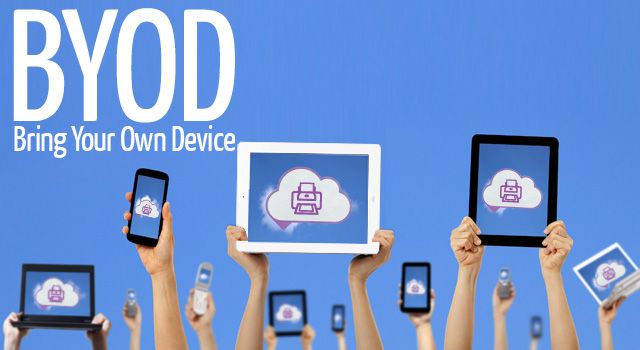Bring Your Own Device (BYOD): #3 The Corporate Face
Bring Your Own Device essentially became the companies’ way of shifting mobile device costs from the corporate budget to the employees (the other heavy burden on the employees is the expectation of high availability, but this is outside the scope of this article). Although the costs were somehow shifted and can be justified on the paper, it was just the beginning.
It was not a game of hit’n’run. Although the companies succeeded in the first round, they had more to think about the future. In fact, what they did presented more challenges. Here is a small, non exhaustive list of issues that the corporate IT departments should rather be discussing:
- Which devices can fully be supported? An environment supporting ActiveSync is OK to some degree, but will you change procedures to support POP access to e-mail for the legacy devices?
-
Is it OK to support only Exchange Active Sync for email, calendar, tasks or will the corporate communication application be also supported?
<p> To what extent will the devices be allowed on the network? In the best-case scenario where ActiveSync is used, will the support be limited to synchronizing emails, calendar, contacts, to-dos, notes only or will the devices be allowed to access file servers or collaboration applications or even in-house applications? </li> <li> To what extent will the device owner (the employee) will allow corporate management? Will she allow remote wipe? Will she allow application installation? Will she allow IT policies on her device? If yes, to what extent? If no, will her device be allowed to enter the corporate network? </li> <li> How many devices per person will be supported? An employee can have a smartphone, a tablet, an ultrabook and say a multimedia player, all in the supported device list. Will the support be available for each device? </li> <li> Is the network capable of handling the additional load by the mobile devices? </li> <li> Which operating systems will be supported? At the time of this article, the newest Android release was 4.2, but there are millions of devices sold with 2.3, 3.x and 4.x releases. What about the iOS releases? What about Windows phone – support for legacy 7.0, or the dead-end 7.5 and above or just the current release 8.0? </li> <li> Which devices will be supported to what degree? Is it OK for a supported device owner to contact the corporate help desk to get support for her device, say changing alarm tone, or will the support be limited to accessing corporate resources? </li> <li> Which applications be supported? If you just think about the stock Android browser and Chrome is OK, you are dead wrong. One of the hottest selling tablet is Kindle Fire and it has its own browser, called “Silk.” </li> <li> What if the app required to create or manipulate data is a paid app? Say, what if a mobile office suite is required to edit spreadsheets is a paid app? And what if this paid app is offered free by the manufacturer on one device and not offered at all on the other? </li> <li> Will the jailbroken/rooted devices be supported? If the corporate IT is allowing “own device”, will it not allow “own customization”? </li> <li> How much security on the device is allowed? Is it OK to allow any reputable, up-to-date security app running on the device or the mobile version of the corporate security application be enforced? </li></ul> <p> RELATED: CIO Perspective: How to Free up Money to Innovate </p> <p> The issues show us one important thing: the IT and the user became the partners. The IT department is no longer the one that holds the stick and imposes its standards on the users: the IT needs to sit down with the users and find a way that is beneficial to both sides. With the focus on the user and the above questions cleared, the IT has to sit down and think on its own. IT is not the enforcer anymore. It has to find a way that can harmonize its work with the users.<br /> A list of humble recommendations for the IT department: </p> <ul style="text-align: justify"> <li> Open channels to allow employees to speak their ideas. The enthusiasts know more about apps then the IT pros, and they have tried it. Why not establish a group of enthusiasts to take part in IT decision making, letting them submit app requests, app reviews, recommendations, test results? </li> <li> Bring social to the enterprise. Connect your employees, tell them the plans, engage them in projects. E-mail is OK, but now is the time to go social. (Hint: start by checking <a rel="nofollow noopener" target="_blank" title="Yammer Home Page" href="https://www.yammer.com/">Yammer</a>. It’s free.) </li> <li> Speak with the vendors. Arrange meetings and time to time ask select enthusiasts to join the meeting with the vendors. Engaged, enthusiast employees demanding additional services from the vendors, together with the solutions that the vendors applied in other companies will result in overall increased productivity in the enterprise. Win-win for everyone. </li> <li> Discuss things with both young and older employees. Young employees bring high expectations, old employees blend them with the experience. If you follow the myth that the older employees know less, you are trashing wonderful ideas upfront. </li> <li> Think digital. If you are purchasing books for the corporate library, think about the soft copies, ebook organizers and mobile deliveries to employee devices as well. </li> </ul> <p> RELATED: Enterprise IT In The Post-PC Era </p> <p> Once all these are discussed and the policies established, the next step is to manage the enterprise mobility.<br /> References </p> <ul style="text-align: justify"> <li> Featured image: http://redboardbiz.rogers.com </li> </ul>




